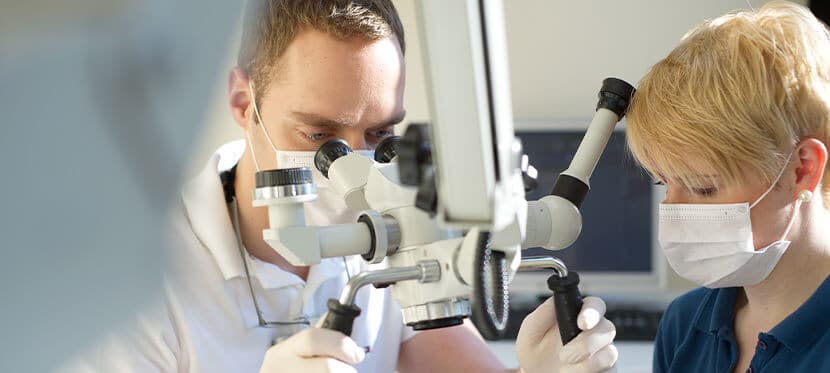
Root canal treatment | Endodontics
Endodontics (syn. root canal treatment) deals with the inner workings of the tooth (endo = inside, odont = tooth).
Protected by the enamel and the underlying dentin, the pulp is located in a cavity inside the tooth. It consists of nerves, blood vessels and connective tissue, and is connected to the body’s circulation through small openings at the tips of the roots.
When do I need endodontic treatment?
This treatment becomes necessary when the pulp has become inflamed, in most cases due to caries, or has already died as a result of prolonged inflammation. Through the openings at the root tips, bacteria can spread, causing damage to the surrounding bone and a typical “swollen cheek” in the form of an abscess.
What is the prognosis of endodontic treatment?
The prognosis depends largely on the initial findings, the individual anatomical conditions and the treatment methods. In recent years, there have been significant advances in endodontics, which significantly improve the quality of treatment. The most important of these are flexible instruments made of new alloys, electronic root length measurement, ultrasound-activated rinsing and three-dimensional root canal filling. The introduction of dental microscopes also makes it possible to see and treat even the tiniest tooth structures that are hidden from the naked eye. Scientific studies have shown success rates of up to 95%, provided that modern treatment methods are used.
We are therefore very pleased to be able to offer you these innovative methods as part of “microscopic endodontics”!
Are there alternatives to endodontic treatment?
The alternative is to remove the tooth in question. To avoid subsequent problems such as tooth migration or masticatory impairment, the missing tooth should then be replaced by an implant, bridge or denture. However, please keep in mind that dentures, no matter how well they are made, can never replace a natural tooth! Therefore, it should only be used when all tooth preservation options have been exhausted.
What will the costs be for me?
The costs depend on the effort required, which itself depends on the initial findings, the number of root canals to be treated and the desired treatment method.
When making your decision, please keep in mind that endodontic treatment represents the last attempt to preserve your natural tooth and is usually the more cost-effective option compared to corresponding dental prostheses, even in complicated cases! From scientific studies and years of experience, it is clear that the long-term prognosis depends quite significantly on the extent and thus the quality of the initial treatment.
Since the preservation of your teeth is the primary goal of our treatment, we are very pleased to be able to offer you these innovative treatment methods within the framework of “microscopic endodontics”!
The basic treatment steps
1. Accessing the root canal system
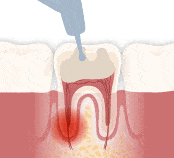
In this step, a dental microscope and a special staining agent make it possible to find additional canal entrances. For example, the first upper molar has an additional 4th root canal in over 90% of cases! To prevent the entry of saliva and thus bacteria during treatment, the tooth is isolated with a small elastic surgical drape (rubber dam).
2. Cleaning and shaping with instruments
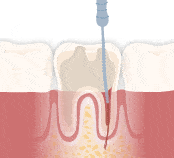
Particularly fine, flexible instruments made of new alloys are used that can be precisely controlled by a special motor. This also enables the finishing of very fine and curved canal structures. To determine the exact length of the root canals, we use an electronic length measuring device, which is much more accurate than conventional X-rays.
3. Antibacterial rinses
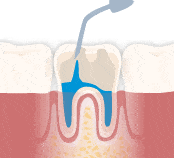
The success of the treatment depends on proper disinfection. That is why we use scientifically proven rinsing protocols that combine different active ingredients. Their effectiveness can be significantly increased by activation with ultrasound. This activation results in even the tiniest filaments being disinfected.
4. Hermetic root canal filling
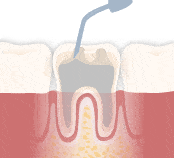
Of course, a liquid root canal filling material can more easily penetrate into the smallest cavities than conventional solid materials. This is why we make use of “thermoplastic 3-dimensional root canal filling”.
5. Inserting a cover filling
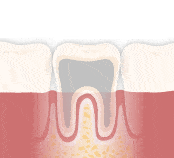
Scientific studies show that the best root canal filling can fail if bacteria can later enter the tooth interior again due to a leaking cover filling. Therefore, we seal your tooth with bacteria-proof acrylic after each treatment using a special bonding technique.
Microscopic endodontics and revision of old root fillings
In recent years, there have been significant advances in the field of endodontics, which have significantly improved the quality of treatment. We hope to give you the opportunity to take advantage of these advances for your treatment and to get you as excited about modern, microscopic endodontics as we are!
The primary goal of endodontic treatment is the efficient elimination of bacteria from the entire root canal system, because if microorganisms remain, the treatment is in danger of failing. This assumes that all canal sections are fully treated. However, the actual anatomy of the root canal is not straight but as individual as a fingerprint, with subtle branches, connections, curvatures and, not so rarely, additional root canals!
That’s why the introduction of dental microscopes has been a tremendous asset to endodontics. They make it possible to see and thus treat the smallest tooth structures that were previously hidden from the naked eye.

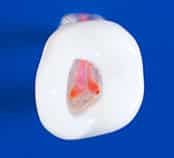
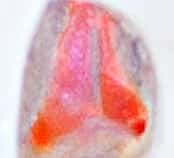
Viewing with: Image 1: naked eye, Image 2: magnifying glasses, Image 3: microscope.
Is all the effort really worth it?
This is a legitimate question, considering the time invested and the costs incurred and after intensive training and our daily experience with microscopic endodontics, we can answer with an unequivocal “yes”!
The German Society for Dental Conservation gives a success rate of up to 95% for uncomplicated initial treatments. In less favorable initial situations, such as the renewal of an inadequate old root filling (revision), there is still a probability of over 80%, provided that modern treatment techniques are used.
Contact us, we will be happy to advise you on our treatment options and methods. Your practice team
Your Dentist in Berlin
Right next to the Charité
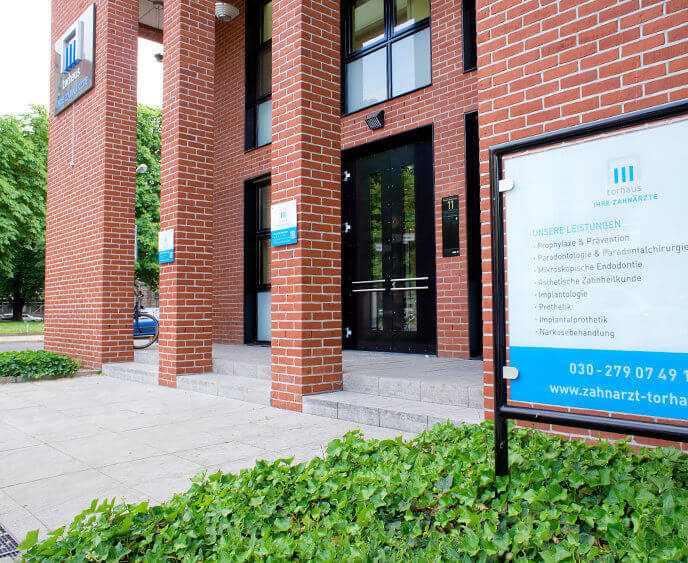
- Mon - Fri open from 8:00 - 20:00
- 030 95 99 99 400
- Robert-Koch-Platz 11 · 10115 Berlin Mitte
How to find us